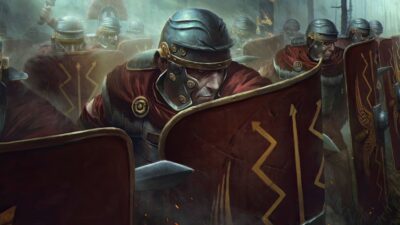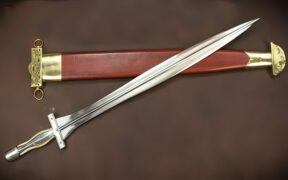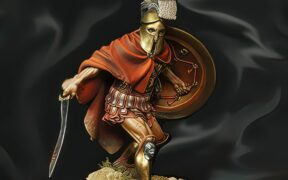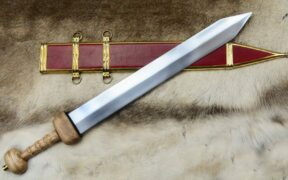Xiphos vs Gladius: Comparing Features, Histories, and Combat
NO AI USED This Article has been written and edited by our team with no help of the AI
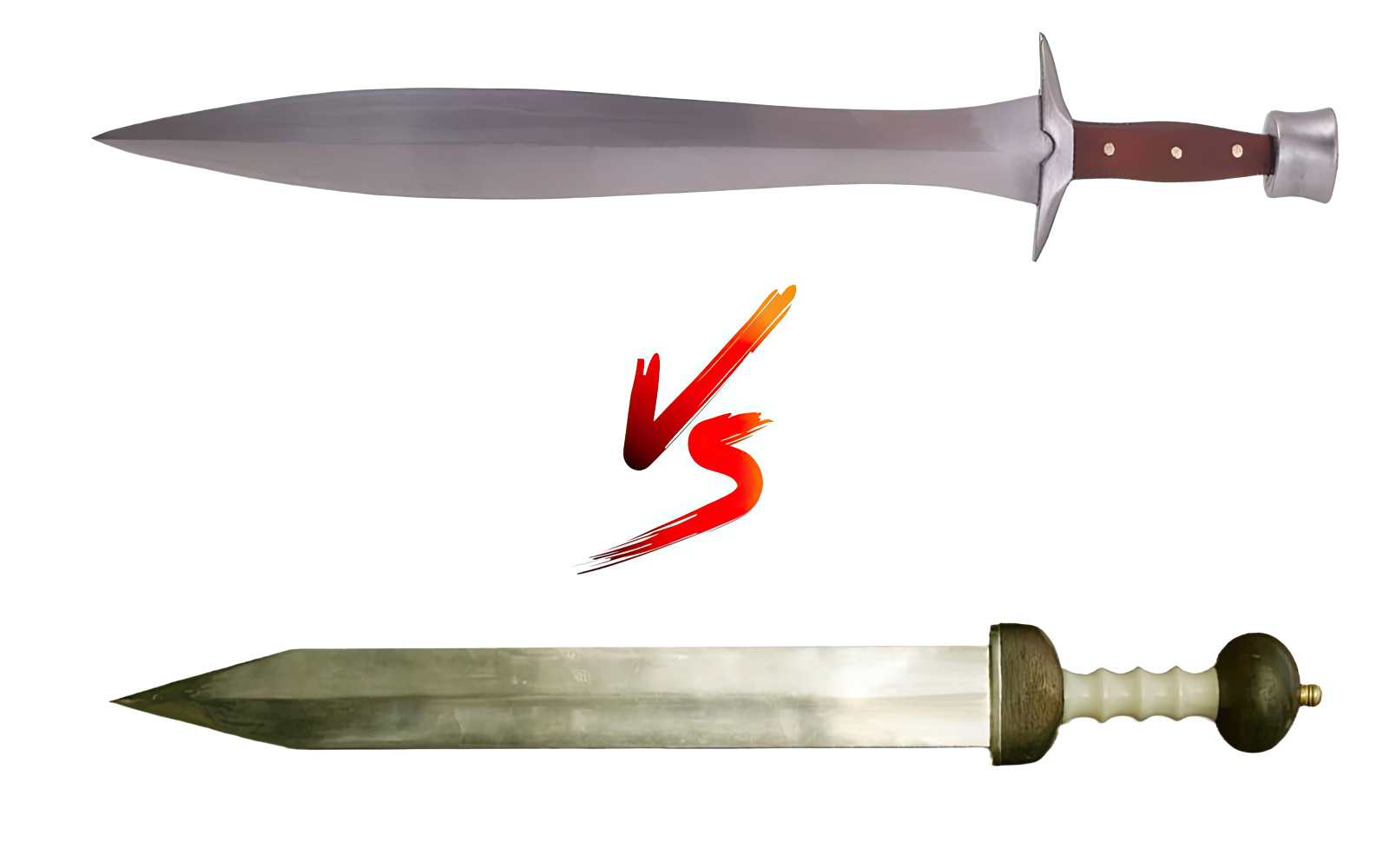
The xiphos and the gladius are two of the most famous swords used in ancient European history. The xiphos was the iconic sword of the Greek Athenians and Spartans, while the gladius was the weapon of the Roman legionaries.
This article will examine their differences, historical significance, and how they would fare in a duel based on their unique combat preferences.
Terms, Characteristics, and Design Differences
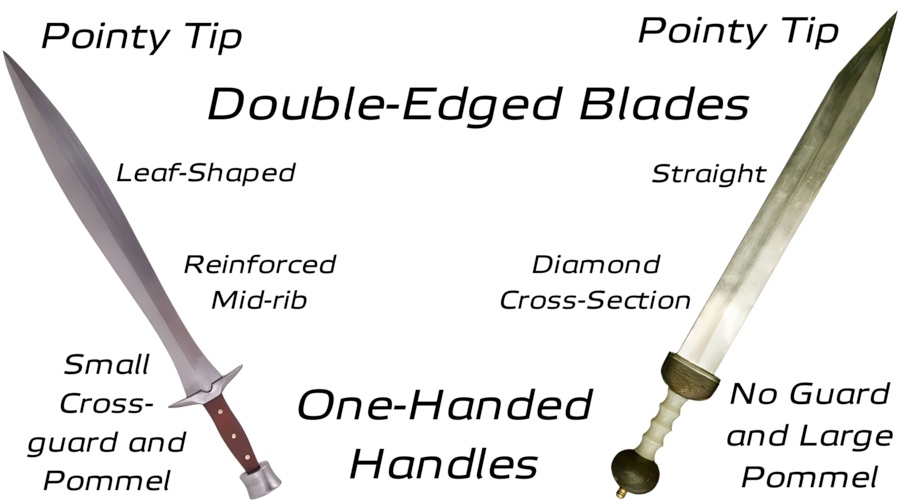
Xiphos is an ancient Mycenaean word used in modern Greek alongside spathi (sword) and can be traced back to the Greek literary piece Homer’s Odyssey. It translates to sword, sharp and pointed, and it represents bravery or power.
The term gladius comes from the Latin language. Its origins trace back to the Celtic kladimos, Gaulish kladyos, and old Irish claideb and its etymology was used by the Romans to refer to any of their swords. Today it specifically describes the main shortsword used by the Roman legionaries.
Blade
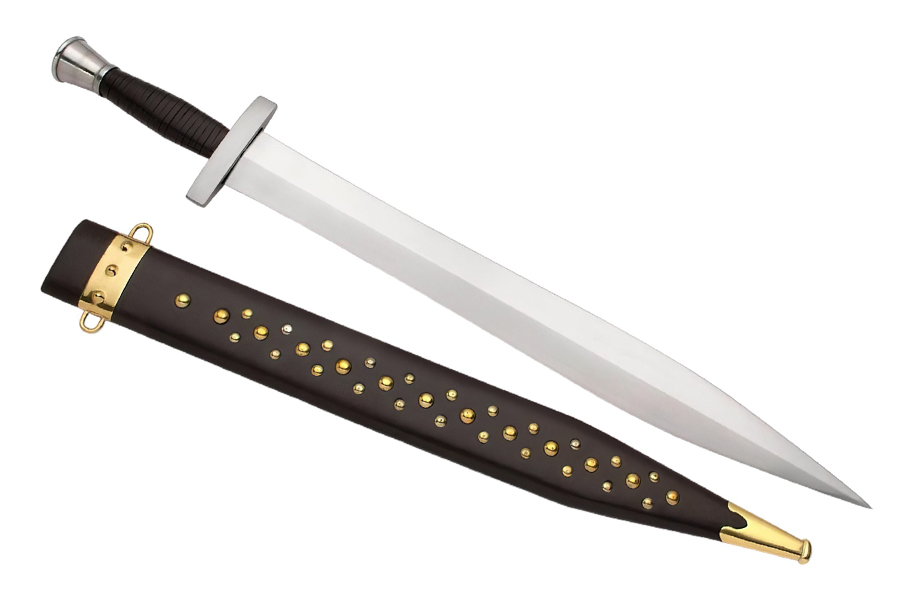
The Greek xiphos can be made of bronze, iron, and steel, depending on the time. Its iconic ancient leaf-shaped blade is thinner near the hilt and tip while broadening towards the center.
The xiphos sword has a double-edged blade with a reinforced mid-rib that strengthens it when used for cutting or stabbing. Its length can vary, as well as the amount of taper.
The gladius Roman sword was made of iron and steel, depending on the century. It is a double-edged blade with a diamond cross-section that emphasizes its durability and is especially effective in stabbing attacks.
It could also have different cutting edges, such as gladius hispaniensis, mainz gladius, fulham gladius, or Pompeii gladius, which differ in the taper level near the tip, thickness, and length.
Hilt

Both the xiphos and gladius swords were one-handed weapons with hilts that ensured a firm grip.
The more complex hilt of the xiphos consisted of a small crossguard for protection, resembling a bridge, and a rounded or square pommel.
Gladius swords had a larger rounded pommel without a handguard. Its handle could be wooden or bone and had finger grips. It broadened near the top in a style known today as capulus.
Scabbard
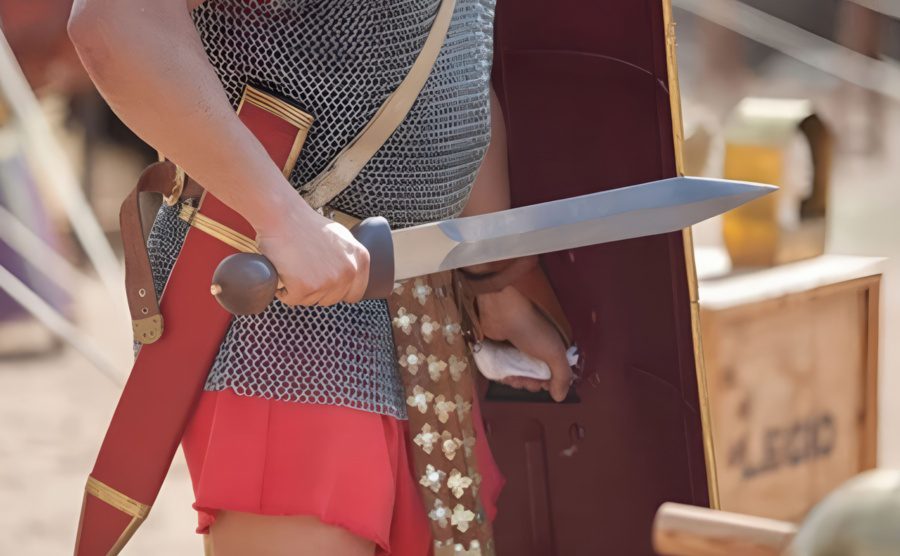
The Greek xiphos was carried on the belt on the wielder’s left side and strapped to his shoulder, allowing for quick unsheathing and a downward stab.
The gladius of the Roman Empire was strapped on the user’s belt and usually carried on the untraditional right side. This allowed it to be unsheathed with the right hand while holding the larger scutum shield near the body with the left.
Size and Weight
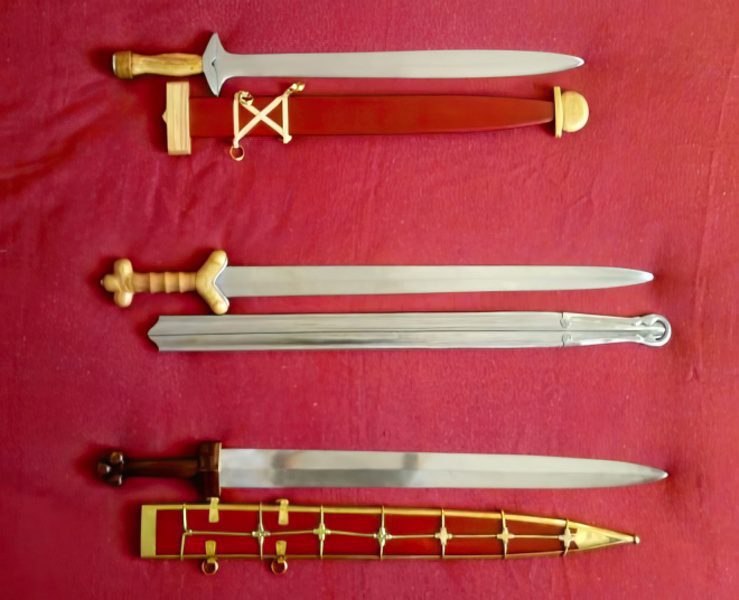
The xiphos and gladius are shortswords with similar dimensions from 17.7 to 27.5 inches (45 to 70cm). Their lightweight was also similar, ranging from 1.3 to 2.2 lbs (0.6 to 1 kg), making them easy to maneuver.
Historical Significance
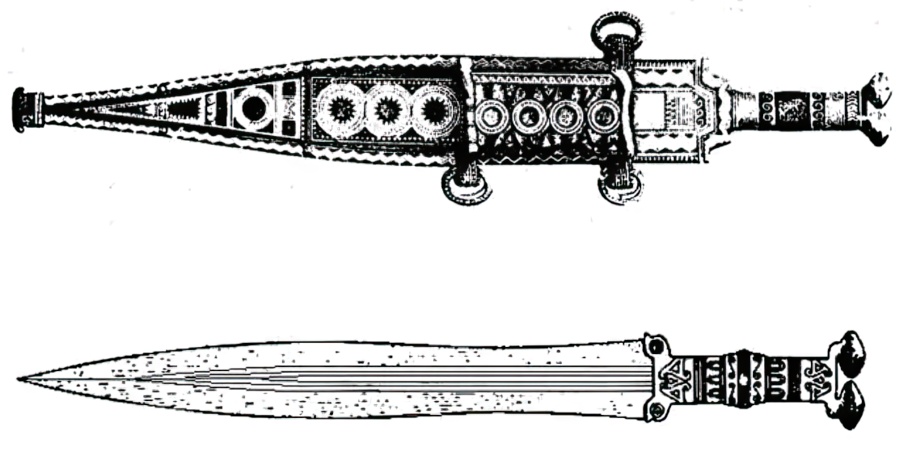
The Greek xiphos appeared as early as the 7th century BCE in possibly bronze or iron with characteristics inspired by Celtic Hallstatt swords with leaf-shaped blades. The xiphos were used beside the curved kopis outside ancient Greece, spreading across many regions. The xiphos was also used in warfare by the early Romans Etruscans.
The gladius appeared around the 3rd century BCE and was made from iron. It was also inspired by the Celto-Iberian and Germanic blades of the Iron Age. It was easier to mass distribute and was effective in the Roman army’s close-quarter fighting style, especially during and after the Punic Wars (264-146 BCE).
The Romans conquered the Hellenic world with the gladius, making it one of the most significant weapons in ancient history. It was also used by the Roman legions, foot soldiers, and slaves, spreading across Europe, North Africa, to modern-day Iran.
Over time, the gladius evolved into the longer spatha to meet cavalry needs for protecting the Roman borders against invaders, influencing European swords from the Viking era to the Renaissance.
Combat Preference
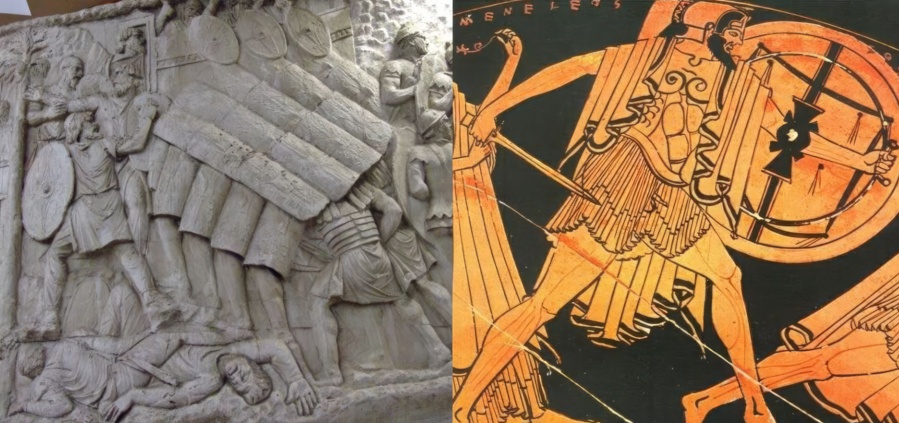
The xiphos and gladius were used with similar motions due to their broad blades and strong tapered tips, making them ideal cut-and-thrust weapons.
The xiphos was a reliable sidearm of the Hellenic hoplites and a beloved secondary weapon next to the dory (spear) or the sarissa (polearm). Its compact size made it perfect for shield-to-shield combat.
The gladius was used with a pilum (throwing javelin) or a hasta (spear). From the 3rd century BCE onward, Rome became a sword-using culture, and the gladius sword was a primary weapon of war.
It was used in close-quarter formation fighting with a scutum (large shield). Soldiers were trained to use it primarily as a weapon to be thrust at the torso and as a slashing tool. The gladius had a very large shield, and the Roman legionary didn’t focus on attacking the enemy from the front. Instead, he targeted to his right.

